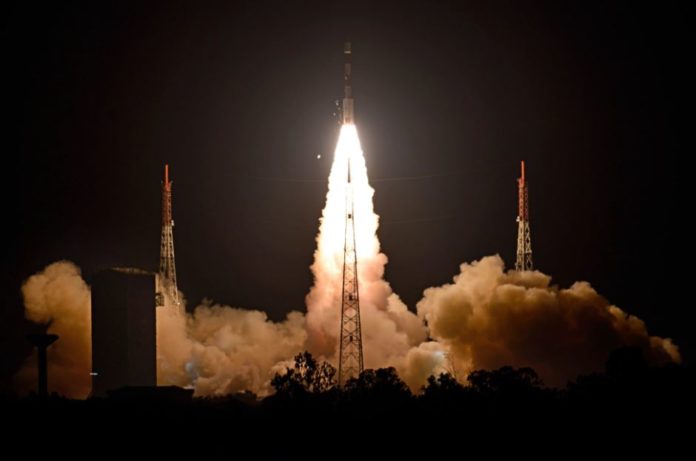The Indian Space Research Organisation (ISRO) has successfully launched the IRNSS-1I navigation satellite carried by the PSLV-C41. The launch took place at Satish Dhawan Space Centre in Sriharikota. The IRNSS-1I is a part of the ‘Navigation with Indian Constellation’ i.e. NavIC which can be defined in simple terms as the Indian GPS.
Expressing delight on the news, PM Modi took to his official Twitter account to congratulate ISRO and wrote that he is proud of the team:
Congratulations to our scientists on the successful launch of navigation satellite IRNSS-1I by PSLV. This success will bring benefits of our space programme to the common man. Proud of team @isro!
— Narendra Modi (@narendramodi) April 12, 2018
Talking more about the launch details, the flight lasted for 19 minutes after which the vehicle achieved a Sub Geosynchronous Transfer Orbit inclined at an angle of 19.2 degrees to the equator. The vehicles achieved a perigee (nearest point to earth) of 281.5 km and apogee (farthest point to earth) of 20,730 km when the satellite separated from the PSLV.
Followed by the separation, the solar panels of IRNSS-1I deployed automatically and ISRO’s Master Control Facility at Hassan, Karnataka took control of the satellite. IRNSS i.e. Indian Regional Navigation Satellite System is an independent system that has been designed to provide position information in the Indian region and 1500 km around the Indian mainland.
As a part of the NavIC, several ground facilities required for the IRNSS satellite have been established in several locations across India. These facilities include ranging and monitoring, generation and transmission of navigation parameters, network timing, satellite control, etc.
The first satellite in the network was IRNSS 1A that ran into trouble as the atomic clocks on the satellite failed one after another. Later on August 31, a replacement was launched in the form of IRNSS 1H but this time the rocket failed and the satellite never entered the orbit. Now finally the space agency has launched this IRNSS-1I that will hopefully work successfully.
This launch is crucial for us because India needs its own GPS system. The need was felt during the Kargil conflict when India required the services of a satellite-based navigation and American system was not available at the moment.
As of now only US and Russia have their own fully operation GPS facilities. On the other hand, India, China, and Europe are trying to establish their own system as it’s considered to be a strategic asset that can work wonders for the armed forces.
Till date, 52 Indian and 237 custom satellites have been launched through the PSLV. Besides, the agency has planned 9 more launch missions over the next 8 months, including the moon mission which is likely to be carried out by the end of this year.












